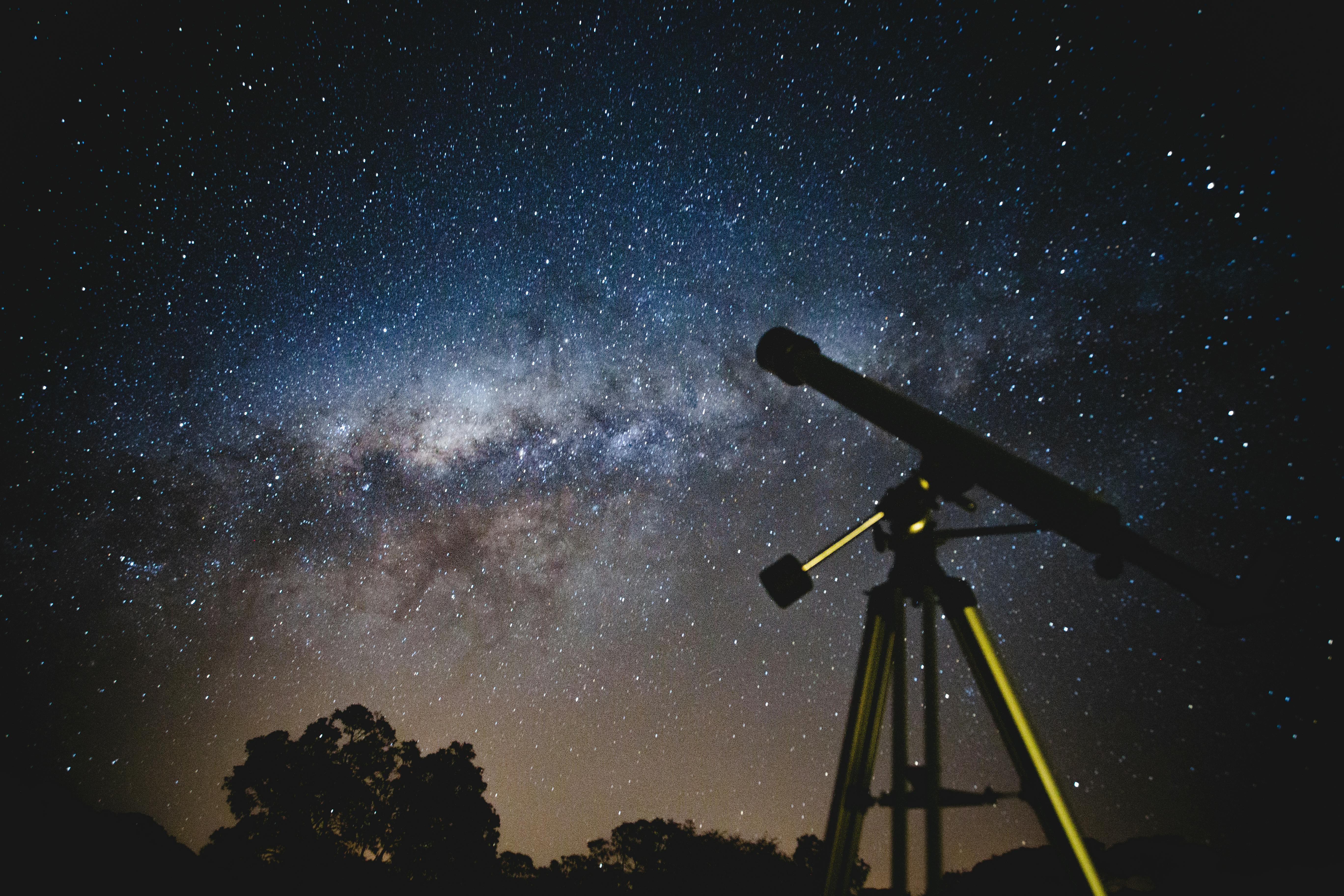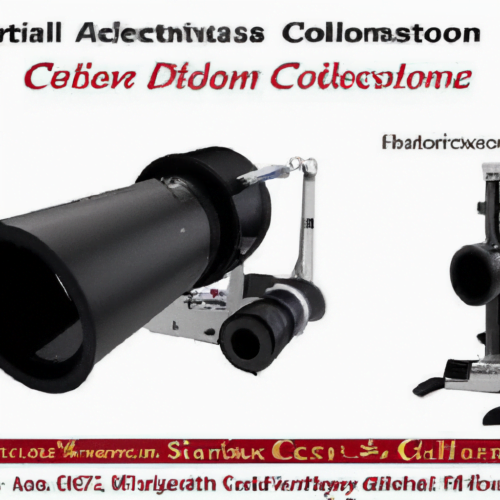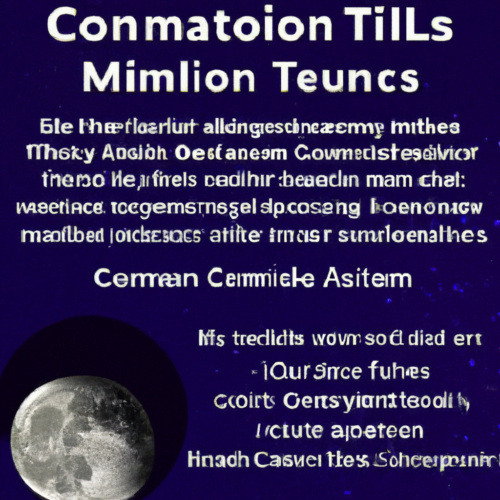Imagine you’re gazing up at the vast night sky, eager to explore the stars and galaxies. But what if the images you see through your reflector telescope are blurry or distorted? That’s where collimation comes in. This crucial process ensures that the mirrors in your reflector telescope are perfectly aligned, allowing you to enjoy sharp, crisp views of the celestial wonders above. In this article, we’ll delve into the reasons why collimation is so important for reflector telescopes, and how mastering this skill can enhance your stargazing experience. So, let’s embark on a journey to unlock the secrets of collimation and unlock the beauty of the universe through your telescope lenses.

Table of Contents
What is Collimation?
Definition of collimation
Collimation refers to the process of aligning the various optical components of a telescope to ensure that the light entering the telescope is focused accurately. In simple terms, it is the adjustment of the mirrors within the telescope to ensure optimal performance and image quality.
Importance of collimation for telescopes
Collimation plays a crucial role in allowing reflector telescopes to function at their highest capability. Without proper collimation, the images produced by the telescope can be blurry, distorted, and lacking in clarity. By aligning the mirrors precisely, collimation helps maximize the performance of a reflector telescope, allowing astronomers and enthusiasts to observe the night sky with enhanced precision and detail.
Overview of Reflector Telescopes
Explanation of reflector telescopes
Reflector telescopes are a type of optical telescope that utilize mirrors to gather and focus light. They consist of a primary mirror, which is the largest mirror in the system, and a secondary mirror, which is smaller in size. The primary mirror collects incoming light and reflects it to the secondary mirror, which then directs the light towards the eyepiece or camera for observation.
Advantages of reflector telescopes over other types
Reflector telescopes offer several advantages over other types of telescopes. One major advantage is their ability to gather more light compared to refractor telescopes of the same size. This makes reflector telescopes ideal for observing faint celestial objects such as galaxies and nebulae. Additionally, reflector telescopes are generally more affordable and easier to maintain than other types, making them popular among both amateur and professional astronomers.
Components of a reflector telescope
A typical reflector telescope consists of several key components. These include the primary mirror, which is responsible for capturing and reflecting incoming light, and the secondary mirror, which redirects the light gathered by the primary mirror towards the eyepiece. Other components include the eyepiece, which allows the observer to view the magnified image, and the focuser, which is responsible for adjusting the distance between the eyepiece and the mirrors to achieve proper focus.
The Optics of Reflector Telescopes
Primary mirror and its role
The primary mirror is the most important component of a reflector telescope. It is usually concave in shape and serves the purpose of gathering light from distant celestial objects. The primary mirror reflects the incoming light towards the secondary mirror, which then directs it towards the eyepiece for observation. The quality and precision of the primary mirror’s surface greatly affect the overall performance and image quality of the telescope.
Secondary mirror and its role
The secondary mirror in a reflector telescope is positioned in the light path between the primary mirror and the eyepiece. Its primary role is to reflect and redirect the light gathered by the primary mirror towards the eyepiece or camera. The secondary mirror is typically smaller in size than the primary mirror and is often tilted at a 45-degree angle to allow the observer to comfortably view the image without obstruction.
Focal length and focal ratio
The focal length of a reflector telescope is the distance between the primary mirror and the focal plane, which is where the image is formed. It determines the magnification and field of view of the telescope. The focal ratio, often expressed as f/number, is calculated by dividing the focal length of the telescope by the diameter of the primary mirror. It is an important factor in determining the brightness and clarity of the images produced by the telescope.
Light path and image formation
In a reflector telescope, the light path starts with the incoming light from the celestial objects being collected by the primary mirror. The primary mirror reflects the light towards the secondary mirror, which then redirects it towards the eyepiece or camera. The eyepiece further magnifies the image, allowing the observer to view it. Through this series of reflections and refractions, the reflector telescope forms an image that can be observed and studied.
Understanding Collimation in Reflector Telescopes
Definition and purpose of collimation in telescopes
Collimation in reflector telescopes refers to the process of aligning the optical components, particularly the primary and secondary mirrors, to ensure that the light path remains consistent and focused. The purpose of collimation is to maximize the performance and image quality of the telescope by eliminating any misalignments or aberrations that may occur during transportation or regular usage.
Role of collimation in optimizing performance
Proper collimation is essential for optimizing the performance of a reflector telescope. When the mirrors are properly aligned, the telescope can achieve its highest level of resolution, allowing the observer to observe celestial objects with greater clarity and detail. Collimation also ensures that the telescope gathers and focuses light accurately, enhancing its light-gathering capability and overall functionality.
Impact of collimation on image quality and clarity
Collimation has a direct impact on the image quality and clarity produced by a reflector telescope. Misaligned mirrors can result in blurry, distorted, or even double images. By collimating the telescope, these issues can be resolved, resulting in sharper, more well-defined images. Proper collimation also helps eliminate or minimize optical aberrations such as coma and astigmatism, ensuring that the observed images closely represent the actual celestial objects.

Collimation Process for Reflector Telescopes
Tools and equipment required for collimation
Collimating a reflector telescope requires a few specific tools and equipment. These include a collimation eyepiece, also known as a Cheshire eyepiece, which is designed to aid in aligning the mirrors; a screwdriver or Allen wrench for adjusting screws; a collimation cap or tube; and a stable mount or tripod to ensure the telescope remains steady throughout the collimation process.
Step-by-step guide to collimating a reflector telescope
- Begin by setting up the telescope in a stable position, ensuring that it is securely mounted and oriented towards a bright, distant object such as a star or a distant terrestrial object.
- Insert the collimation eyepiece into the focuser of the telescope and look through it. The eyepiece will display a circle of light with a crosshair pattern.
- Adjust the primary mirror’s collimation screws or knobs to center the reflected crosshair pattern within the circle of light. This aligns the primary mirror.
- Next, check the alignment of the secondary mirror. Use the collimation cap or tube to block the direct light from the primary mirror and observe the secondary mirror’s reflection in the cap or tube.
- Adjust the secondary mirror’s collimation screws or knobs to center the reflection within the cap or tube. This ensures the secondary mirror is properly aligned.
- Repeat the process of adjusting both the primary and secondary mirrors as necessary, fine-tuning their alignment until the desired collimation is achieved.
- Once collimation is complete, remove the collimation eyepiece and replace it with the desired eyepiece for observation or astrophotography.
Tips and techniques for accurate collimation
- Take your time and be patient throughout the collimation process. Rushing can lead to inaccurate adjustments and potential damage to the telescope.
- Adjust the collimation screws or knobs in small increments and make note of the changes to better understand their impact on the overall alignment.
- If possible, perform collimation under optimal lighting conditions, such as during daylight, to allow for easier observation of the reflected light patterns.
- Regularly check and maintain the collimation of your reflector telescope to ensure consistent performance.
Common Collimation Issues in Reflector Telescopes
Misalignment of mirrors
One of the most common collimation issues in reflector telescopes is the misalignment of the mirrors. This can occur due to various factors such as transportation, rough handling, or regular usage. Misaligned mirrors can result in distorted or blurry images, reducing the telescope’s overall performance.
Spherical aberration
Spherical aberration is another common issue that can affect the collimation of a reflector telescope. It occurs when the mirrors are not properly shaped, resulting in a loss of sharpness and clarity in the observed images. Collimation helps minimize spherical aberration by aligning and optimizing the mirror surfaces.
Coma and astigmatism
Coma and astigmatism are optical aberrations that can impact the collimation of a reflector telescope. Coma causes distortion in the shape of stars, usually towards the edges of the field of view. Astigmatism results in elongated or irregularly shaped images. Precise collimation can help correct these aberrations and improve image quality.
Distorted star images
Improper collimation can lead to distorted star images, known as star bloat or star elongation. Stars may appear as irregular blobs instead of sharp points of light. By ensuring proper collimation, these issues can be minimized, allowing for more accurate observation and study of celestial objects.

Impact of Poor Collimation on Telescope Performance
Reduced image sharpness and clarity
Poor collimation can significantly reduce the sharpness and clarity of the images produced by a reflector telescope. Misaligned mirrors can result in blurry or distorted images, making it difficult to observe and study celestial objects in detail.
Decreased light gathering capability
Collimation issues can also impact the light gathering capability of a reflector telescope. Misaligned mirrors can cause a loss of light, reducing the overall brightness and visibility of the observed objects. Proper collimation ensures optimal light collection and maximizes the telescope’s performance.
Distorted and aberrated star images
One of the noticeable impacts of poor collimation is the presence of distorted and aberrated star images. Stars may appear elongated, distorted, or bloated rather than sharp points of light. Correcting these issues through proper collimation allows for more accurate and detailed observation of stars and other celestial objects.
Negative effects on astrophotography
Poor collimation can have detrimental effects on astrophotography. Imaging through a misaligned telescope can result in blurry or distorted images, making it difficult to capture clear and detailed photographs of celestial objects. Precise collimation is crucial for achieving optimal astrophotography results.
Methods to Verify Collimation
Collimation eyepiece and its usage
A collimation eyepiece, also known as a Cheshire eyepiece, is a useful tool to verify and fine-tune the collimation of a reflector telescope. It provides a clear and focused view of the internal components of the telescope, allowing the observer to assess and adjust the alignment of the mirrors.
Star-testing method
The star-testing method is another common technique used to verify collimation. By observing a defocused star through the telescope, the observer can assess the circular symmetry of the resulting pattern. Any irregularities or distortions in the pattern can indicate the need for collimation adjustments.
Barlowed laser method
The Barlowed laser method is a more advanced technique used to verify collimation. It involves using a collimation-specific laser collimator in conjunction with a Barlow lens. The laser collimator emits a laser beam, which is reflected and directed by the mirrors. Observing the resulting pattern can provide valuable insights into the collimation status of the telescope.

Advantages of Proper Collimation
Enhanced image quality and resolution
Proper collimation directly contributes to enhanced image quality and resolution in a reflector telescope. By accurately aligning the mirrors, the telescope can produce sharper, more detailed images, allowing the observer to see finer details on celestial objects.
Optimal brightness and contrast
Collimation plays a crucial role in maintaining optimal brightness and contrast in the observed images. By minimizing light loss and reducing optical aberrations, proper collimation ensures that the telescope gathers and focuses light accurately, resulting in images with vibrant colors and well-defined contrast.
Corrected optical aberrations
Collimation helps correct various optical aberrations, such as coma and astigmatism, that can affect the image quality of a reflector telescope. By aligning the mirrors precisely, collimation minimizes these aberrations, resulting in clearer, more accurate representation of celestial objects.
Improved astrophotography results
Proper collimation is vital for capturing high-quality astrophotographs. By ensuring accurate alignment of the mirrors, collimation allows for sharp, well-focused images with minimal distortions. This is crucial for achieving stunning astrophotography results, capturing the beauty of celestial objects with clarity and precision.
Regular Maintenance and Re-Collimation
Frequency of collimation checks
Regularly checking the collimation of a reflector telescope is essential to maintain optimal performance. The frequency of collimation checks depends on various factors such as usage, transportation, and environmental conditions. As a general guideline, it is recommended to check the collimation at least once every observing session or whenever the telescope has been transported.
Importance of re-collimation after transportation
Transporting a reflector telescope, particularly over long distances or in rough conditions, can result in misalignments and shifts in collimation. It is crucial to re-collimate the telescope after transportation to ensure that the mirrors are properly aligned and the telescope is performing at its highest capability.
Preventative measures to maintain collimation
To maintain collimation between regular checks, it is vital to handle the reflector telescope with care and avoid any rough or sudden movements. Securely store the telescope when not in use, ensuring that it is protected from extreme temperatures and humidity. Regularly inspect and clean the mirrors, focusing on removing any dust, debris, or fingerprints that could impact collimation. By taking these preventative measures, you can help maintain the collimation of your reflector telescope and ensure consistent performance.
In conclusion, collimation is a vital process for optimizing the performance and image quality of reflector telescopes. By aligning the mirrors precisely, collimation ensures that the telescope gathers and focuses light accurately, resulting in enhanced resolution, clarity, and overall functionality. Regular collimation checks, proper maintenance, and careful handling are essential to ensure optimal collimation and consistent performance of your reflector telescope. With proper collimation, you can truly appreciate and explore the wonders of the night sky with unparalleled precision and detail.

